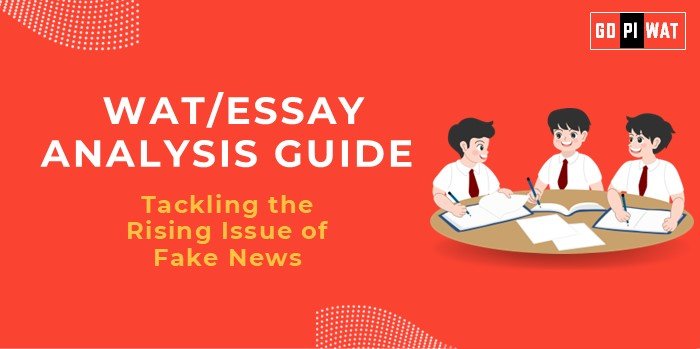📰 Tackling the Rising Issue of Fake News
🌟 Understanding the Issue’s Importance
Fake news undermines democracy, misinforms public policy, and damages corporate reputations. Tackling it aligns with broader B-school themes like media ethics, digital marketing, and corporate responsibility.
⏳ Effective Planning and Writing
- Time Allocation: Plan: 5 mins, Write: 20 mins, Review: 5 mins.
- Preparation Tips: Note statistics, stakeholders, and current case studies.
✍️ Introduction Techniques for Essays
- Contrast Approach: “In an age of instant information, fake news has ironically become a pressing global challenge.”
- Solution-Based Approach: “The battle against fake news requires a mix of public awareness and robust technology.”
📚 Structuring the Essay Body
- Achievements: E.g., Finland’s media literacy success, AI tools by Meta and Google.
- Challenges: Misinformation campaigns, cross-border complexities, AI limitations.
- Future Outlook: Increased global coalitions, deepfake detection technologies.
🏁 Concluding Effectively
- Balanced Perspective: “The fight against fake news is ongoing, demanding consistent efforts across stakeholders.”
- Global Comparison: “While countries like Finland show promise, global challenges remain due to disparities in resources and policies.”
📈 Analyzing Successes and Shortcomings
- Key Achievements: Digital literacy campaigns, AI adoption.
- Ongoing Challenges: Political polarization, limited tech reach.
- Global Context: Lessons from Finland, challenges in the US.
💡 Recommendations for Sustainable Progress
- Educational Initiatives: Embed media literacy in school curricula.
- Cross-Border Policies: UN-mediated frameworks for global coordination.
- Technological Innovation: Investment in deepfake detection and real-time AI moderation.
📄 Sample Short Essays
1. Balanced Perspective
“Fake news thrives in the digital age, exploiting both technological gaps and human biases. Efforts like Finland’s media literacy curriculum show promise, but global disparities hinder progress. Tackling fake news requires sustained cooperation between governments, tech firms, and citizens.”
2. Solution-Oriented
“Addressing fake news demands a three-pronged approach: educational reforms, AI-driven solutions, and stringent regulations. While challenges persist, such measures can bridge the gap between awareness and action.”
3. Global Comparison
“Fake news is a universal challenge, but solutions vary. Finland’s media literacy programs set a benchmark, while the US struggles with political divides. Sharing best practices globally can help tackle this growing menace.”


